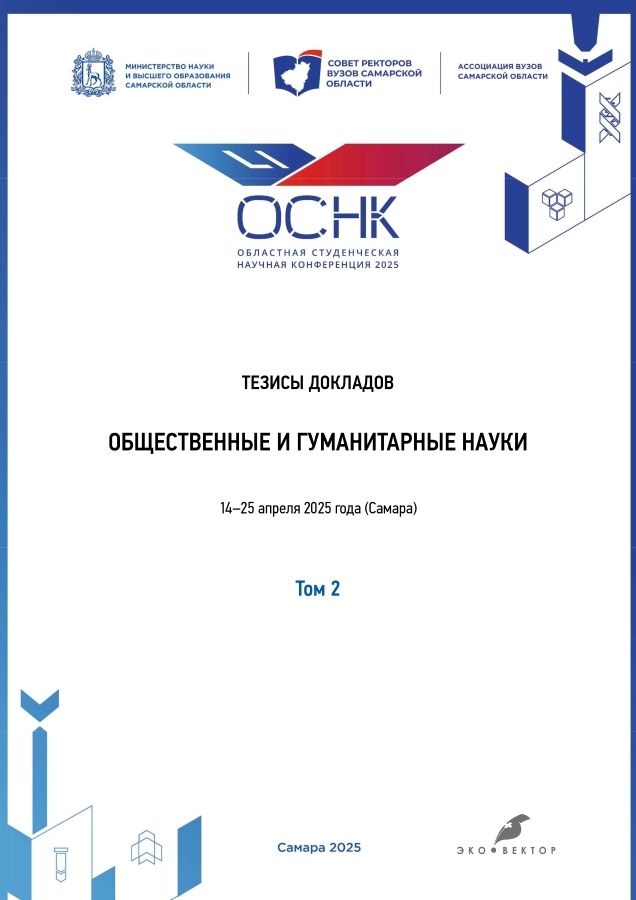Development of a recommendation algorithm for article selection based on teenage interaction with a psychological support app
- Authors: 1
-
Affiliations:
- Togliatti State University
- Issue: Vol 2 (2025)
- Pages: 203-203
- Section: ЧАСТЬ II. Иностранный язык в области профессиональной коммуникации
- Submitted: 11.05.2025
- Accepted: 03.06.2025
- Published: 06.11.2025
- URL: https://consilium.orscience.ru/osnk-sr2025/article/view/679521
- ID: 679521
Cite item
Full Text
Abstract
Justification. In recent years, there has been a significant increase in emotional and psychological disorders among teenagers. Between 2019 and 2023, the percentage of adolescents suffering from depression rose from 18 % to 36 %, with stress levels reaching up to 45 %. The COVID-19 pandemic, social isolation, and digital overload have exacerbated these issues. As teenagers are heavily engaged with digital platforms, this presents an opportunity for adaptive, real-time support through psychological mobile applications. Addressing the mental health crisis with timely, personalized content can strengthen emotional resilience and early intervention.
Objectives. The primary objective of this work was to design and implement a personalized article recommendation algorithm within a psychological support app for teenagers. The system was required to be modular, real-time, privacy-focused, scalable, and behaviorally adaptive.
Methods. The system was built using a three-layer modular architecture. The client-side component was developed in Kotlin and incorporated interaction tracking through swipe gestures (right for saving an article, left for rejecting) within the article browsing interface. These behaviors fed directly into a lightweight local recommendation engine, enabling real-time personalization without requiring server communication. Data such as quiz results, reading times, and user interactions were sent to a Python-based backend using TensorFlow. A multi-task neural network was designed to predict risk levels of depression, anxiety, and stress using binary cross-entropy loss, with results returned via API. The Firebase platform was used for cloud data storage and synchronization.
Results. The mobile app successfully implemented real-time personalization of article recommendations based on the frequency and relevance of preferred topics. The server-side neural model provided dynamic assessment of psychological risk, triggering personalized feedback and support materials when necessary. The app included emotional state visualizations, interactive polls, and user feedback forms, allowing for continuous refinement of the recommendation logic. The architecture ensured rapid response, strong data protection, and high user engagement.
The client-side module allowed for rapid and private personalization of content. The server-side neural model provided risk predictions that triggered targeted support — from curated articles to breathing exercises or specialist contact suggestions. The feedback loop with interactive quizzes and emotional trend charts increased engagement and refined personalization. System components and data flows are illustrated in Table 1.
Table 1. System Components and Functions
Component | Technology | Role |
Mobile Client | Kotlin | Captures behavior, applies local recommender |
Cloud Storage | Firebase | Stores user data and synchronizes preferences |
Server | Python + TensorFlow | Runs multi-task neural model for mental risk detection |
Conclusions. This system demonstrates an effective combination of on-device intelligence with server-side analytics, providing personalized and scalable psychological support to teenagers. The architecture ensures privacy and adaptability, enabling more effective digital intervention in the field of adolescent mental health.
Full Text
Justification. In recent years, there has been a significant increase in emotional and psychological disorders among teenagers. Between 2019 and 2023, the percentage of adolescents suffering from depression rose from 18 % to 36 %, with stress levels reaching up to 45 %. The COVID-19 pandemic, social isolation, and digital overload have exacerbated these issues. As teenagers are heavily engaged with digital platforms, this presents an opportunity for adaptive, real-time support through psychological mobile applications. Addressing the mental health crisis with timely, personalized content can strengthen emotional resilience and early intervention.
Objectives. The primary objective of this work was to design and implement a personalized article recommendation algorithm within a psychological support app for teenagers. The system was required to be modular, real-time, privacy-focused, scalable, and behaviorally adaptive.
Methods. The system was built using a three-layer modular architecture. The client-side component was developed in Kotlin and incorporated interaction tracking through swipe gestures (right for saving an article, left for rejecting) within the article browsing interface. These behaviors fed directly into a lightweight local recommendation engine, enabling real-time personalization without requiring server communication. Data such as quiz results, reading times, and user interactions were sent to a Python-based backend using TensorFlow. A multi-task neural network was designed to predict risk levels of depression, anxiety, and stress using binary cross-entropy loss, with results returned via API. The Firebase platform was used for cloud data storage and synchronization.
Results. The mobile app successfully implemented real-time personalization of article recommendations based on the frequency and relevance of preferred topics. The server-side neural model provided dynamic assessment of psychological risk, triggering personalized feedback and support materials when necessary. The app included emotional state visualizations, interactive polls, and user feedback forms, allowing for continuous refinement of the recommendation logic. The architecture ensured rapid response, strong data protection, and high user engagement.
The client-side module allowed for rapid and private personalization of content. The server-side neural model provided risk predictions that triggered targeted support — from curated articles to breathing exercises or specialist contact suggestions. The feedback loop with interactive quizzes and emotional trend charts increased engagement and refined personalization. System components and data flows are illustrated in Table 1.
Table 1. System Components and Functions
Component | Technology | Role |
Mobile Client | Kotlin | Captures behavior, applies local recommender |
Cloud Storage | Firebase | Stores user data and synchronizes preferences |
Server | Python + TensorFlow | Runs multi-task neural model for mental risk detection |
Conclusions. This system demonstrates an effective combination of on-device intelligence with server-side analytics, providing personalized and scalable psychological support to teenagers. The architecture ensures privacy and adaptability, enabling more effective digital intervention in the field of adolescent mental health.
About the authors
Togliatti State University
Author for correspondence.
Email: stasyrez@gmai.com
student, PIb-2106a
Russian Federation, TogliattiSupplementary files










